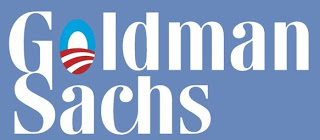Don’t blame American appetites, rising oil prices, or genetically modified crops for rising food prices. Wall Street and The Fed are at fault for the spiraling cost of food.
Frederick Kaufman
Foreign Policy
Bankers recognized a good system when they saw it, and dozens of speculative non-physical hedgers followed Goldman’s lead and joined the commodities index game, including Barclays, Deutsche Bank, Pimco, JP Morgan Chase, AIG, Bear Stearns, and Lehman Brothers, to name but a few purveyors of commodity index funds. The scene had been set for food inflation that would eventually catch unawares some of the largest milling, processing, and retailing corporations in the United States, and send shockwaves throughout the world.
The money tells the story. Since the bursting of the tech bubble in 2000, there has been a 50-fold increase in dollars invested in commodity index funds. To put the phenomenon in real terms: In 2003, the commodities futures market still totaled a sleepy $13 billion. But when the global financial crisis sent investors running scared in early 2008, and as dollars, pounds, and euros evaded investor confidence, commodities — including food — seemed like the last, best place for hedge, pension, and sovereign wealth funds to park their cash. “You had people who had no clue what commodities were all about suddenly buying commodities,” an analyst from the United States Department of Agriculture told me. In the first 55 days of 2008, speculators poured $55 billion into commodity markets, and by July, $318 billion was roiling the markets. Food inflation has remained steady since.
The money flowed, and the bankers were ready with a sparkling new casino of food derivatives. Spearheaded by oil and gas prices (the dominant commodities of the index funds) the new investment products ignited the markets of all the other indexed commodities, which led to a problem familiar to those versed in the history of tulips, dot-coms, and cheap real estate: a food bubble. Hard red spring wheat, which usually trades in the $4 to $6 dollar range per 60-pound bushel, broke all previous records as the futures contract climbed into the teens and kept on going until it topped $25. And so, from 2005 to 2008, the worldwide price of food rose 80 percent — and has kept rising. “It’s unprecedented how much investment capital we’ve seen in commodity markets,” Kendell Keith, president of the National Grain and Feed Association, told me. “There’s no question there’s been speculation.” In a recently published briefing note, Olivier De Schutter, the U.N. Special Rapporteur on the Right to Food, concluded that in 2008 “a significant portion of the price spike was due to the emergence of a speculative bubble.”
RELATED ARTICLE:
5 Easy Ways to Protect Yourself From Food Inflation



Be the first to comment on "How Goldman Sachs Created the Food Crisis"